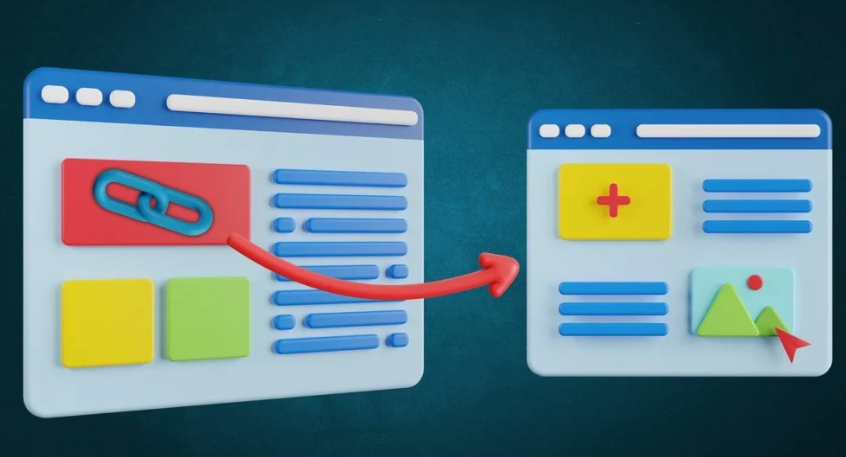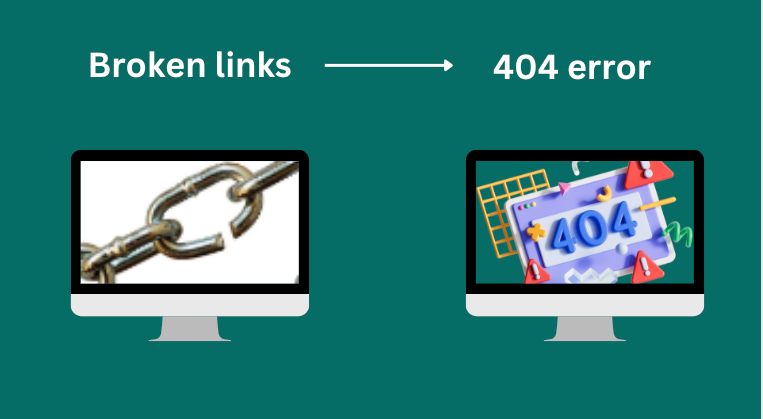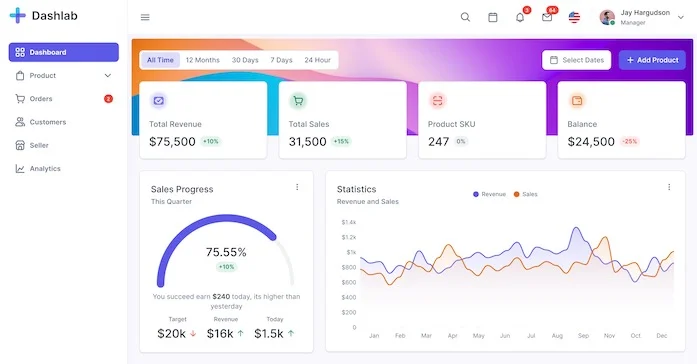Backlinks are extremely valuable to any website. They are essentially connections from other websites directing to yours, which serve as endorsements that search engines appreciate. Building high-quality backlinks is critical to improving your website’s ranking and organic traffic. Let’s look at what backlinks are, how to get them ethically, and which best practices to follow.
What are backlinks?
Backlinks, known as incoming links or inbound links, are links that lead from one website to a page on another website. Backlinks are one of the most important ranking factors used by all search engines. Pages with high authority backlinks are more likely to rank higher in organic search engine results.

Why are backlinks important?
Backlinks are important because search engines such as Google, Bing, and a few others regard them as votes of confidence. This aids in three major areas:
- Ranking: According to the Ahrefs Search Traffic Study, 90.63% of content receives no traffic. And the number of inbound links from different websites (referring domains) is related to organic search traffic.
- Discoverability: Search engines find new content by returning to previously visited pages. And scanning them for newly added links.
Backlinks from popular pages may help them discover your content faster because . Search results revisit popular pages more frequently than unpopular pages.
- Referral Traffic: Referral traffic comes from a backlink that directs visitors to click a link to your website.
What are the Two Types of Backlinks?
- Do-Follow: A do-follow link is one that aids in SEO by transferring the authority of the origin site to the destination site. Do follow links continue to be an important part of SEO strategy today. Hence, obtaining a “backlink” from a trustworthy source can increase Page ranking values and help brands stand out.
- No-Follow: A link that does not provide any SEO value to your Domain Rating or Authority. You can identify these links as they have rel=”nofollow” in the HTML code.
Types of links that matter for SEO
1. Internal links
Internal links are links that lead to pages within the same domain. These are distinct from external links, which lead to pages on other domains. Internal links enable Google to find, index, and comprehend all pages on a website.
2. External links
External links are links or hyperlinks that came from other domains to your website. The same thing applies if you link to another website, this is considered as an external link. External links boost your credibility.
A website’s credibility improves when you include trustworthy and relevant website links in your content. Also, valuable external links provide references to your readers. It helps boost your website’s authority.
3. Natural links
In the simplest terms, Natural links are links that appear on the web without any effort on your part.
Webmasters and SEO professionals link to your page as they see value in it. Natural link building is considered one of the safest and quickest ways for businesses to improve the SEO of their website.
Thus, this increases website’s authority and improves its rankings because it is a significant indicator for search engine algorithms.
4. Manually obtained links
The process of actively attempting to increase the number of links pointing to a website is referred to as manually obtaining links.
What does this mean exactly?
For your website to gain high-quality backlinks, you must put in more effort and invest time in the right strategies.
This entails contacting various website owners and asking them to link back to you via a Guest Post or link insert.
How to determine high-quality backlinks?
When looking for potential link-building opportunities, the first thing you need to consider is the website`s theme or niche. If the topics are completely unrelated to yours, chances are (and Google) will likely regard it as irrelevant and unnatural.
1. Relevance
High-Quality Backlinks come from credible websites. But remember, not all backlinks are created equal. Today, obtaining high-quality backlinks to your website is not a secret anymore.
Different tactics create a further result that increases the chances of appearing in the search engine result pages (SERP). But, aside from that, checking for topical relevance, there are other factors to consider when determining whether a backlink is good or bad. Here are the six critical steps to ensuring that your backlinks are of the highest quality.
2. Website authority
It is worth investigating the authority and strength of your prospective website’s link profile before starting an outreach.
There are SEO tools such as Moz, and Ahrefs where you can check the Domain authority (DA) and domain rating (DR). In the SEO world, the higher the domain rating of a website, the stronger and more authoritative it is.
3. Sites organic traffic and keyword visibility
Seek backlinks from websites that are not only relevant but also of high quality in content. In other words, they should have reasonable organic traffic and keyword visibility.
Theoretically, you ought to have your anchor text posted on a page with a lot of organic traffic so that you can get a lot of visibility in return. Linking your page to a site that is relevant in terms of business, keywords, and a high-traffic domain will result in a fruitful partnership.
4. Number and velocity of referring domains
Invest time to examine the referring domains of your target site to ensure that the number of backlinks is steadily increasing in a natural way.
If you notice a significant increase in referring domains, you should investigate further by determining where those links originated.
If a large part of these domains came from a very low DR or have low traffic stats, it’s likely that the site is problematic, and you should consider disavowing it or requesting that the webmaster remove the link from the page.
5. Do follow and no follow
There is no such thing as a perfect ratio in the number of Do-follow and No-follow links a website should have. The most important thing is that Do-follow should be higher than no-follow, as it has more impact in passing the link juice.
This doesn’t mean we can ignore no-follow links. This also helps to balance our site and somehow provides value when it grows naturally.
6. Anchor text and link placement
The best anchor text and link placement should be integrated naturally into the content. Always remember that when writing an article, make sure that the anchor text slots nicely and is relevant.
Backlinking strategies and tactic recommendations
These tactics include some of the most effective methods for obtaining backlinks.
1. Guest blogging
Guest posting is a popular link-building strategy today. In fact, more than 70% of SEO professionals use Guest Posting to build backlinks.
This allows your company to grow by creating engaging and informative content. an authority in that particular niche or subject who adds value to your brand.

2. Broken link building
Broken link building is a low-effort strategy that results in a win-win situation: the site owner fixes a broken link, and you receive a backlink.
While it is an old-school backlink strategy, 53% of marketers still use it. The idea is to identify broken links within your industry and create replacement content to fill these gaps. Ideally, you’d go after competitor websites to find broken content links. You can accomplish this by using a broken link checker tool, such as the one provided by Ahrefs.
3. Link reclamation
Link reclamation is the process of reclaiming lost links. You read it right! That`s why it’s so aggravating when hard-earned links vanish without a trace, especially since we invest time and effort in building those links.
Link reclamation can be intimidating if you don’t know what it is or why it’s important. Before you get upset, here are four common reasons for losing links.
- The linking page no longer exists (404-page error).
- Website owners remove your link from the linking page.
- The linking page gets redirected (301).
- The linking page is no longer indexed in Google
SEO tools provide valuable inputs to keep you updated on this matter. Check out the lost backlinks report on Ahrefs Site Explorer or Semrush. Export the list and start your outreach to reclaim your lost links.
4. Unlinked mentions
A possibility that your website will be mentioned everywhere on the internet. These mentions should ideally include a link to your website.
But that is not always the case, however. As a result, the phrase “unlinked brand mentions” was coined. To easily check this if you have this unlinked mentioned, use a tool like SEMrush Brand Monitoring Tool. This will make your link-building life easier.
5. Community site link building
This tactic obtains links from other websites of online communities by participating through online forums, blog comments, social bookmarking and other variety of online activities.
These help your business increase brand exposure and awareness since you provide valuable content or resources to a group of people.
Aside from establishing yourself as an industry expert,. This process helps increase your business’s credibility. Which results in your site increasing traffic.
Final thoughts
While there are many ways to build backlinks, it is always best to begin by producing high-quality content. Users will return to your page when they find the articles valuable and able to meet their needs.
Your strategies may depend on many factors. Still, there is no overnight success in SEO. Success always takes time as well as effort.






